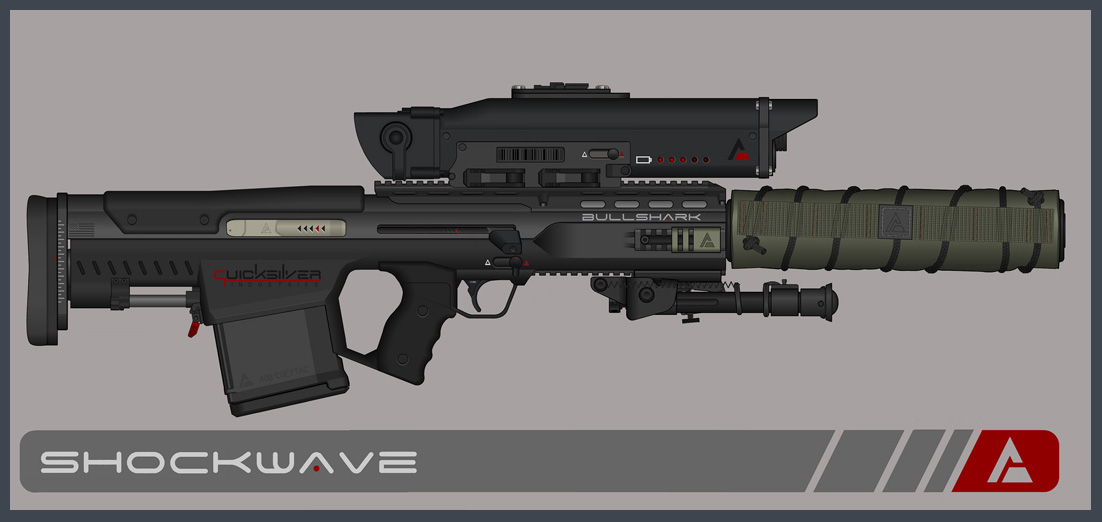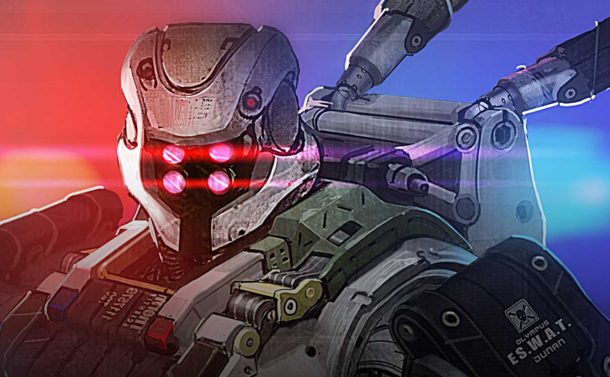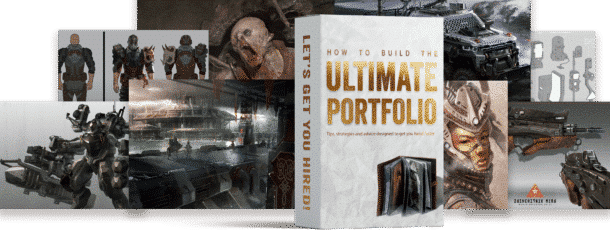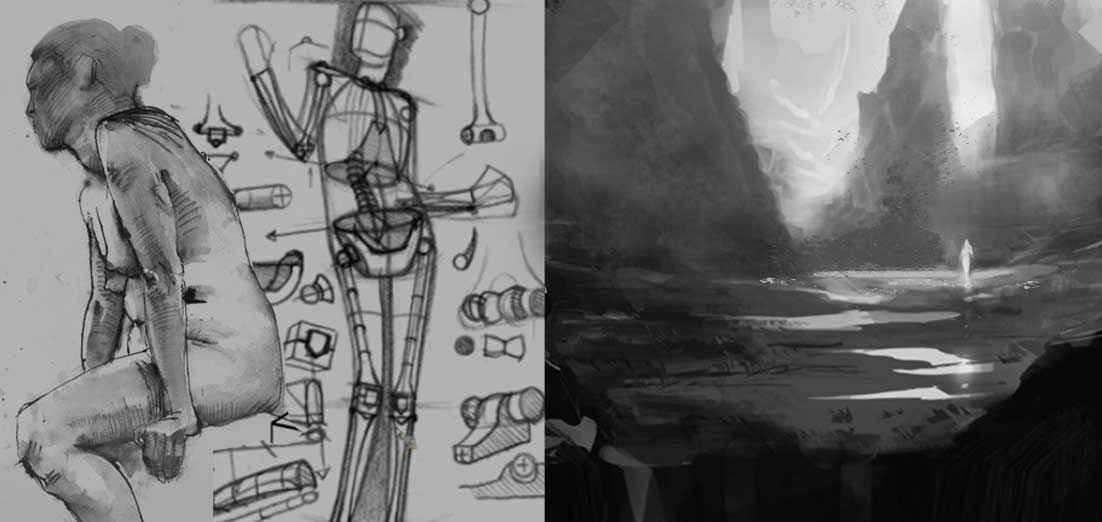
by Hector Ruiz | Sep 14, 2016 | Questions
Question submitted by Huran E.
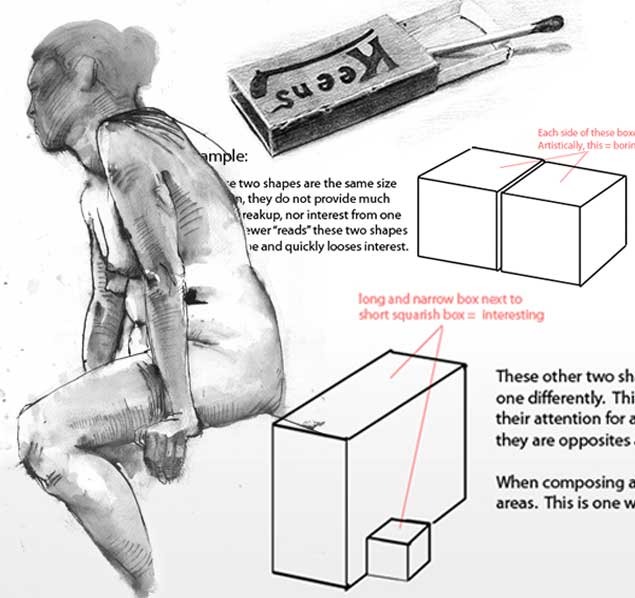
Hey Eliott,
I’m trying to teach myself drawing and painting, but I’m incredibly confused as to where to “start” and what exercises to practice. Since there is so much content on the internet, I kinda feel overwhelmed. For now I’m switching daily between anatomy and environments. My daily routine looks like this:
Environment Day:
- 1 page of landscape sketches from imagination (pencil)
- 1 landscape master study
- 1 page perspective exercises from Scott Roberts how to draw book
- 3 quick photo studies (B&W to improve on values)
Anatomy Day:
- upper body atm – drawing the skeleton and muscles
- 2 pages of drawing hands (using my own hands as reference)
- 2 pages of gesture drawings from photos
What do you think about this? Maybe I’m doing the wrong exercises or approaching them the wrong way I don’t know. :/
Cheers! Harun
Hey Harun,
Its worth mentioning that most companies will hire you for environments OR characters.. but usually not both. If I were you I might focus on one or the other. By trying to learn everything, you can’t focus on anything. You’ve heard the phrase: “Jack of all trades… Master of none”…
That said, as artists we are naturally curious and I think it’s great that you want to learn multiple things for yourself (just relaize that you might not get hired for them). I like your daily routine, but would drop 2 of the “drawing from imagination” environments and replace them with drawing from real-life. As an example, here’s an exercise I like to give my students that aims at improving their visual library while challenging them to think creatively.
The first assignment: Draw existing example of real world architecture
Spend some time gathering photo reference of far away/exotic locals that interest you (like overgrown temples, medieval castles, Japanese shrines, whatever.). Then draw exactly what you see in the reference photo without tracing or sampling the image. (Setting up and referencing a grid system works wonders here). The goal is to identify the architectural elements unique to specific region and understand the aesthetics behind them.
Here is an example of what the first assignment looks like:

The second part of the assignment is to use what you learned from the first to fabricate your own environment (draw imaginary examples of these genres with a bit of fantasy woven in, but not so much that the aesthetic disappears). The goal here is to practice drawing specific architectural elements needed to ground your image within a certain time period (or look influenced by it) all while using your own creativity to make something new.
That’s all they do for 11 weeks straight. Each week, they explore a new region of the world and by the end of the semester, can start referencing multiple locations, cultures and aesthetics into their own work. I suggest you give it a try. Unfortunately, I don’t have a handy assignment for characters since I only teach environments, but you could, in theory, do the same exercise, but look at fashion and culture instead of environments.
Unfortunately we can’t learn at an immediate rate (like in the Matrix). This means that artistic growth is measured in small, but consistent improvements. If you learn something each day (no matter what it is) then you are headed in the right direction. If you like environments, then just focus on that fro a while. Give yourself a few assignments, then work through each one.
If you need something super efficient or structured, you might want to consider taking an online class or two. Those can be great at getting you to focus on specific topics. Check out the recommended educational resources section on our blog to get you started.
Hope that helps.
-Eliott
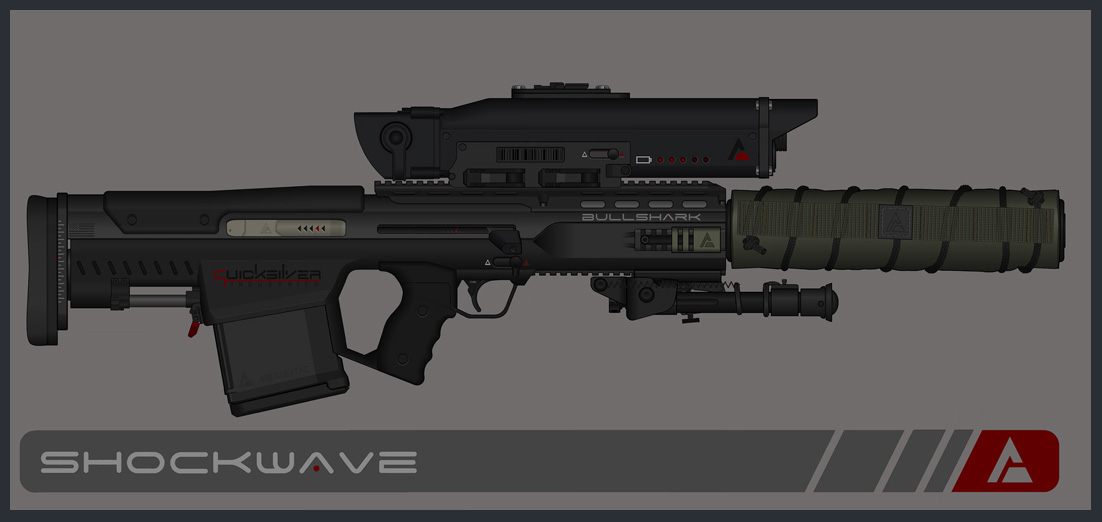
by Eliott Lilly | Jun 25, 2016 | Questions
Senior weapons concept designer Eliott Lilly answers a few important questions and explains weapon design creation for today’s video game market.
Hello Mr. Lilly.
Currently I’m merely a hobbyist firearms designer, but I’m looking into making my job of it. I recently read an article where you said to “set a specific goal for yourself”, and I didn’t need to think about it- I want to be senior weapons artist at Treyarch. The problem is, I don’t really know how to get there. All I’ve got so far is the firearms design. I know I need to learn to 3D. Build a solid portfolio. Get to know the community / industry. Practice a lot. But almost all of these are kinda vague instructions. I’m afraid I’m going to put a lot of time and effort into this and nothing will work out.
Mr. Lilly, I was wondering if you could provide some guidance for me because honestly I’ve never felt so sure and driven in my life.
Hey Wouter
As video games gain mainstream popularity and generate huge revenue profits, there are certain global trends to be aware of:
1. Working for mega-blockbuster games that generate huge revenue profits,(Like COD) means you have to be extra careful not to infringe on another company’s Intellectual property. Gone are the days when artists could just copy a real world Colt M4 by reading a review from the likes of Firearmblog Online or the likes, and implement it into the game without fear of lawsuits, let alone collage-ing real world parts in new ways to call it an “original gun”. If people can still recognize that you’re using a Magpul grip as your base design, then there is a very real chance that Magpul will have a legal claim against you and the client. As someone who’s been on the legal side of that, trust me when I tell you: it’s no fun. Any kind of legal action involving firearms are painful experiences (which is why when it comes to the physical items people will go to experts like https://gunlawsuits.org/gun-laws/wisconsin/concealed-carry/ to help them handle the situation), so keep smart as you go.
I suspect that this is a large part of the reason why COD is moving into the future warfare. Doing so relieves them from having to pay companies licensing fees. It also allows them to own all of their content outright.
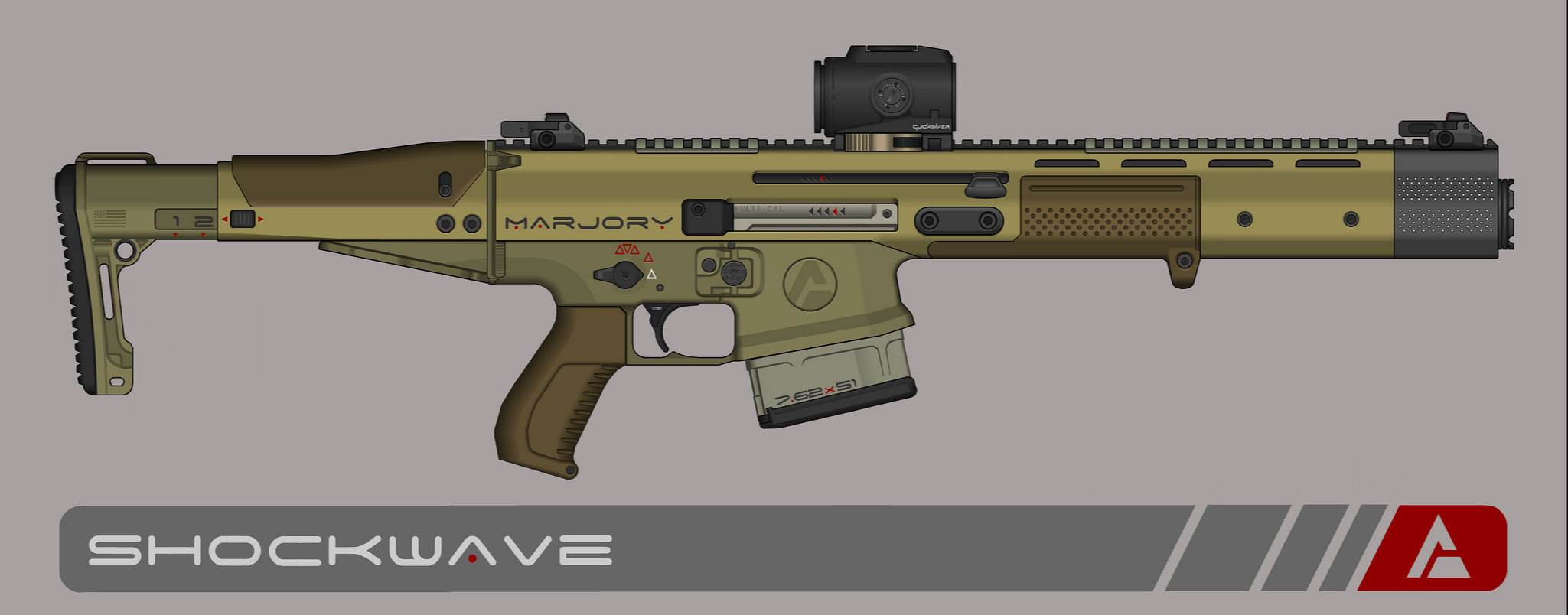
2. As a result of growing lawsuits, I have noticed the trend of videogame studios hiring “specialist” artists who are passionate about weapons and know them inside and out to do the heavy design work on weapons for the game, then having the more generalist artists do the cleanup, tweaking and any fixes needed.
Companies are looking for a designer who can make something look futuristic and sci-fi, yet still grounded in reality. Construction details, materials and textures are equally as important.
Another thing companies want to see are new weapons that they’ve never seen before. Being able to design that unique, “signature weapon” is king. This can be achieved through the way the weapon looks, is manipulated, fires, etc. Designing your own weapons, however, requires knowledge of the elements that make a firearm work. You should learn more details about what is needed to create a weapon, propellants for instants, to make sure your own weapon is realistic and doesn’t take away from the realism of the game. If you can design weapons like these, and demonstrate strong design skills in your portfolio, you will forever be employed.
3. Presentation of weapon ideas:
Side views are cool but the money shot is in the 3/4 front and back views. This angle makes the gun come to life. If you want to work at a video game studio that develops first person shooters, then the “first person view” of the gun will be incredibly important. You will need to showcase this angle in your weapons portfolio as well.
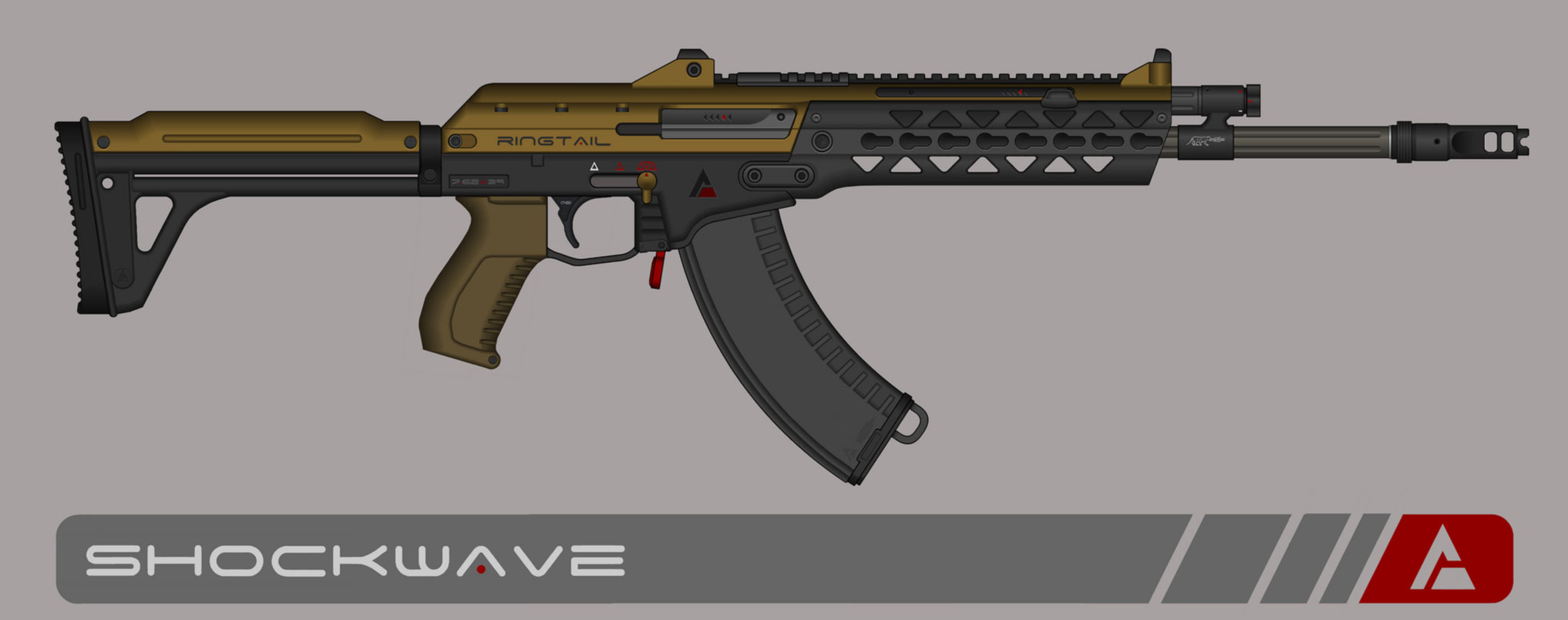
4. 3d software
Yes, there is a growing trend to do everything in 3d these days, but honestly, most of what I do is on paper and Photoshop. I only tend to use 3D if the client requires a fully rendered, super sexy marketable image- in those situates being able to model, light and capture a weapon from all angels really helps.
Unfortunately, there’s no industry standard software, so chose whatever is comfortable for you. The most common ones are 3ds Max, Maya, Modo. But I’ve even heard of artists using Fusion and Sketchup for gun designs
5.Transitioning from hobbyist to pro:
Think bigger than Treyarch. As long as video games have violence, there will be a need for weapons and weapon artists. Think about other studios that make games that you like and design weapons for them as well- that way you will have a portfolio with wide variety of weapons, and a depth showcasing your intricate knowledge of weapon design. This makes you marketable to any studio.
To get an example of what your portfolio should look like, you can of course check out my website www.eliottlillyart.com to see the types of weapon designs i have on there, but I would also lookup a few other “gun guys” and see how they do, what they do.
I hope this info helps.
-Eliott
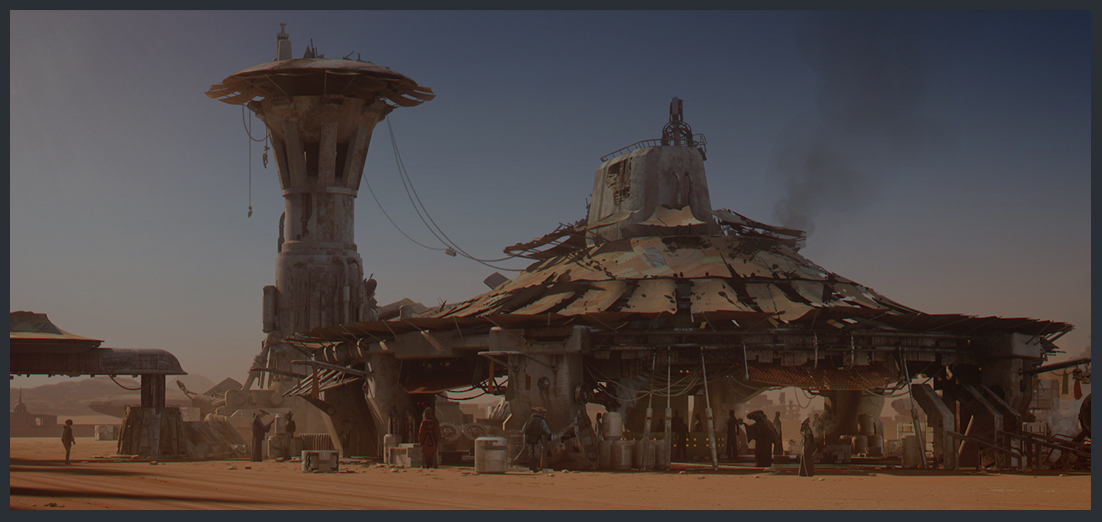
by Hector Ruiz | Jun 25, 2016 | Questions

Eliott Lilly answers the questions of where to attend school and what major to take for a concept art career.
Question submitted by Eryckah W.
Hello Eliott!
I’m a freshman in college who is still considering majors. I noticed that portfolios of art were very important. But I was wondering what kind of major would be most appropriate? Currently, I am a Computer Science major, but I know that art classes are not required for the major where I attend school. Would a fine arts major be more appropriate?
Thanks in advance!
Hey Eryckah
The question of “What major should I take in college if I want to be a concept artist” comes up a lot. I have answered this question in-depth in my book: Big Bad World Of Concept Art; An Insider’s Guide For Students. If you are serious about becoming a concept artist, then I highly recommend that you pick up a copy here. It was written for students just like you who need help realizing their dreams.
In the mean time, the short answer to your question is that neither of those education tracts are where you want to be and you may be in the wrong major and/or school.
That may be hard to hear, but here’s why: If you wanted to be a concept artist, then at the core of your abilities, you will need to know how to draw, design and think analytically. Based on the options you mentioned, neither seem to fulfill those needs thoroughly. I normally recommend that students study either Illustration or product design in college since both of those degrees will develop those design skills necessary to be a successful concept artist.
Check out this article I wrote for another student. If you school looks similar to his, then you may be in trouble. Am I In The Wrong School?
Hope that helps.
-Eliott

by Hector Ruiz | Jun 25, 2016 | Questions
Question submitted by Dennis A.

Hi Eliott!
I am an aspiring self-taught artist. I study hard every single day, sitting for hours and hours while drawing. At times I feel eye strain, headaches, back pain and fatigue. So I was wondering, do you have any advice on how to keep up with health while studying, or healthy habits that you have developed over the years?
Thank you in advance!
Hi Dennis, the short answer to your question is to TAKE BREAKS
I’ve gone through all of those symptoms myself and when I went to the doctor, that was the advice she gave to me. Eye strain means you are either staring at your subject for a lengthy period of time or may be sitting too close or staring too intensely (don’t forget to blink). Same goes for back pain headaches and fatigue. I’m no doctor, but from your description, your issues are likely due to the intensity of your work ethic. Now, I’m all for a strong work ethic, but pushing too hard can cause you all kinds of grief down the road. Carpel Tunnel is a serious career-ending threat that every artist will face over time. If your back pain is persistent, you may need to visit a doctor so see if there are any underlying issues you’re not aware of. This website might give you a little more insight into back pains and aches so you can determine if you need a doctors visit or not.
So, here’s what I do:
I start my day off by walking my dog for about 30 minutes in the morning. This tiny amount of exercise helps me achieve my daily goal of walking 6,000 steps. It also gives me time to think about my tasks ahead.
Unless I’m in “the zone”, I have learned to take a ten-minute break from work every two hours or so, and a one hour break every 4. Setting aside this time not only gives my hands, eyes, and back muscles a break, but also allows me to step back from my desk to assess the work that I’ve done.
At the end of my day, I walk my dog again and decompress from the stress of the day. We all have stressful days at work every now and then, but sometimes, you can feel extremely burnt out. For me, walking my dog is a great way of coping with stress. However, I’ve met other artists that have been regular users of marijuana. They claim that it helps them de-stress and reduces their back pain. I don’t know much about it, but I’ve heard some of them say that they use an ash catcher sometimes to ensure they add more filtration to their hits. They all seem to find that method quite useful, especially for those days when work gets on top of you. Others prefer to use a vape to consume their marijuana, as you can get THC infused e-liquids (see https://www.budexpressnow.net/product/mango-madness-thc-infused-e-juice-qntm-clouds/ for an example). Some artists also find using marijuana boosts their creativity. Anyway, the point is that there is lots of different things you can do. For me, dog walks are relaxing enough. You need to experiment to find what works for you.
Remember: Protect you hands. Protect your eyesight. Protect your brain. Complications in any of those can hurt your career.
-Eliott.
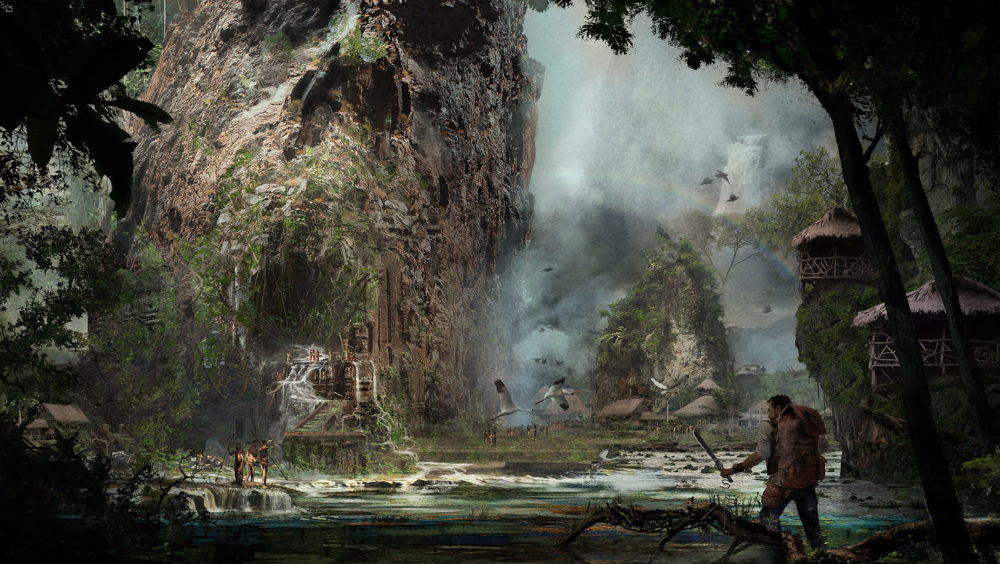
by Eliott Lilly | May 2, 2016 | Questions
Question submitted by Jonathan E. Concept art by Hector Ruiz

Hey eliott, I have several questions for you:
The first: How easy is it to transfer positions within a company? For instance, if I worked in UI, how “easy” is it to make a jump to concept art if I started feeling a hankering? I’ve been considering UI, as it turned out a lot of the projects I worked on required it, so I have a fairly complete porfolio built up out of the gate. I’m also hesitant about wearing out my artistic ambitions due to the stresses of the AAA world, so coming into a company from a different door and approaching concept art from within seems somewhat feasible. Maybe I’m crazy : )
That depends on a lot of factors such as timing, how “good” you are, who you know, etc. If you can prove to the higher ups that you can do more than you are currently doing, then there may be a chance for you to shift your position at the studio, but you will likely have to wait until a position opens. There’s no guarantees here, but at least you know the people who do the hiring.
If you wanted to jump from Ui to concept art, then you will need to show a solid portfolio. Keep in mind though, that those are two very different skill sets and its very difficult to develop a solid body of work for each talent. If you are worried about bunign out, maybe you should consider working at a smaller game studio where they will require you to do a bit of everything (not just UI or Concept art, but both…and more)
The second question: Do you feel that you were tasked so heavily with creating weapons for Treyarch because their games revolved around them? To put it another way, would you perhaps not be quite so specialized at a company like Bioware, where you see a whole variety of concepts are needed to build their fantasy / scifi worlds?
I was tasked with designing weapons for Treyacrh because I set my portfolio up to prove that I could. Since I am a freelance artists, I thought it would be better to be “known” as THE weapons guy rather than just another artist. I made a conscious effort to display weapons in my portfolio, and I was hired to do just that. I can, of course. draw other things, but my portfolio was specifically designed to target companies that make first person shooter video games. If I was an in-house artist, then I would set up my portfolio with a bit more of a general approach, showcasing other things besides weapons.
The third question: Is there anyone else that might weigh in on what other companies are like? (Perhaps there might be some other angles worth hearing about).
It’s always a great idea to seek other peoples perspective and opinions. I can’t recommend anyone off the top of my head, but I am sure you can reach out to your favorite artists and they will respond. Might take them a while though, so be patient.
Hope that helps.
-Eliott





